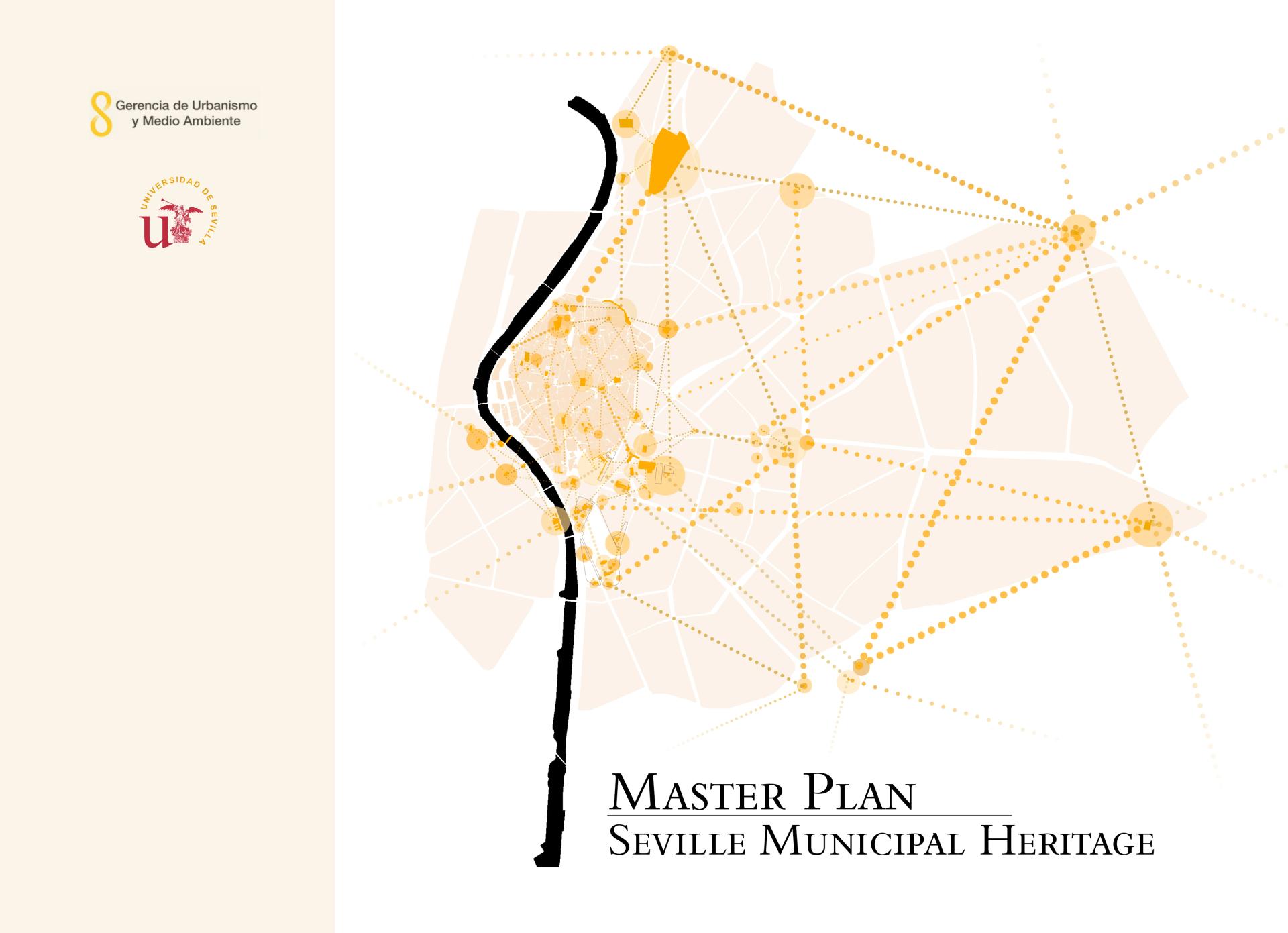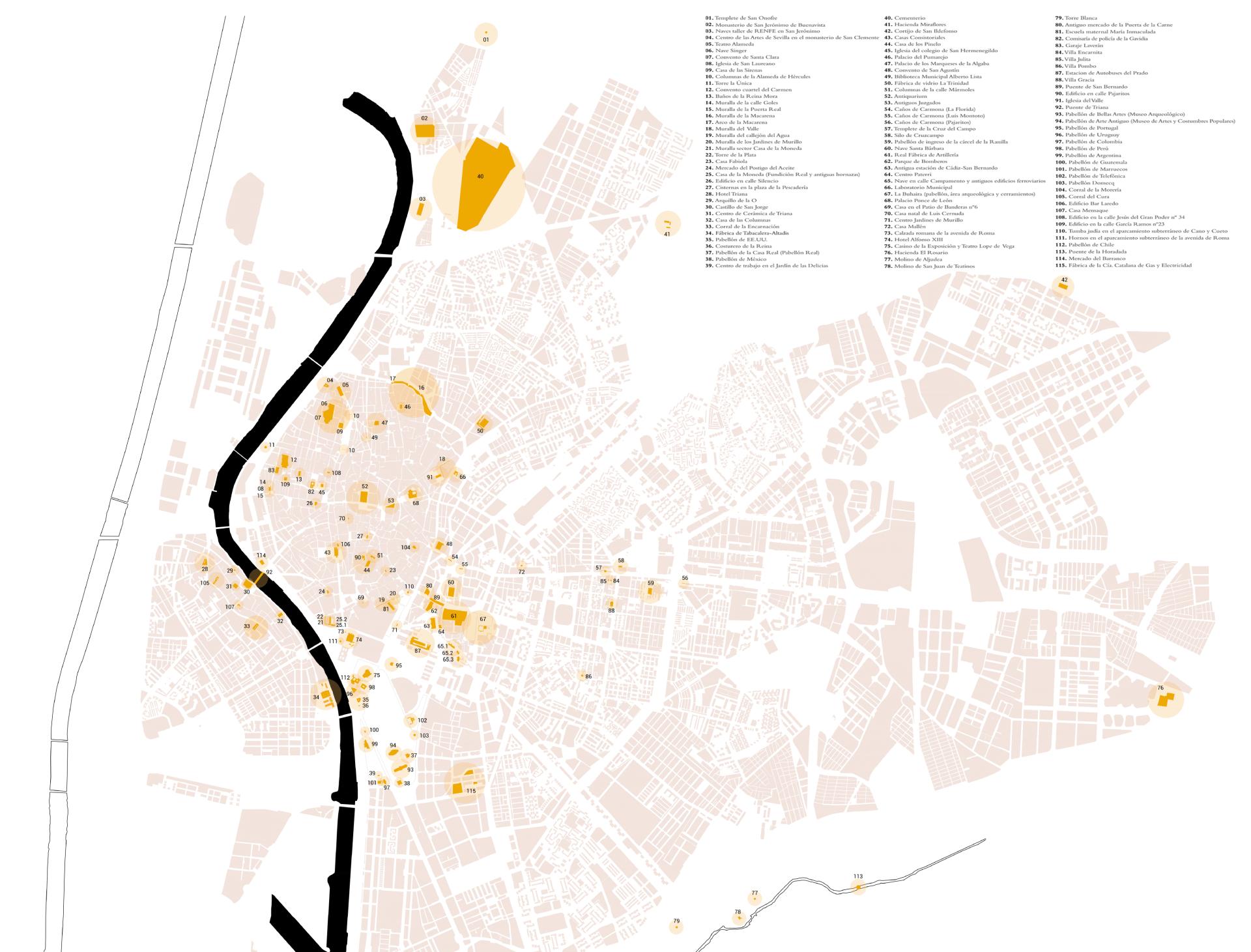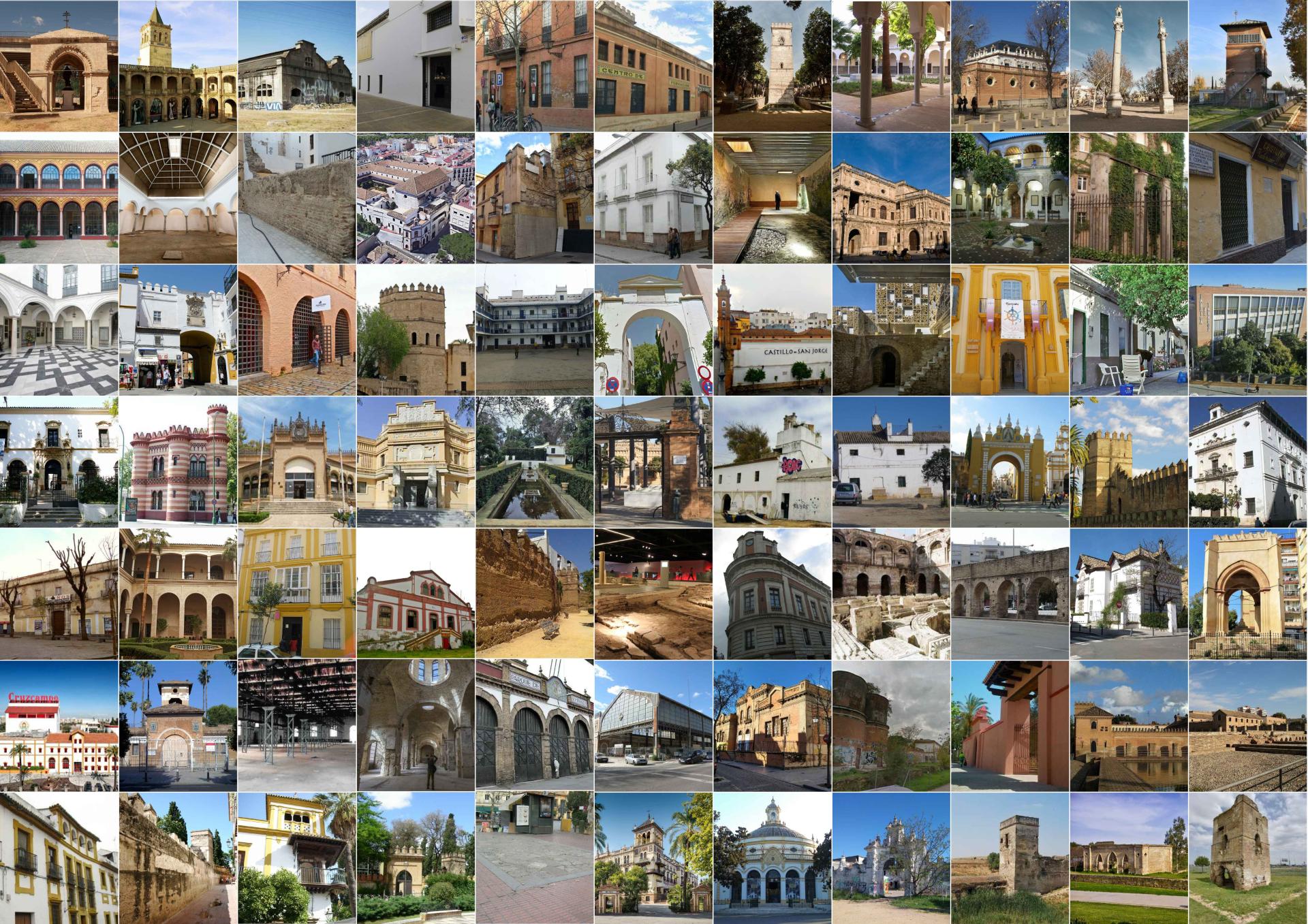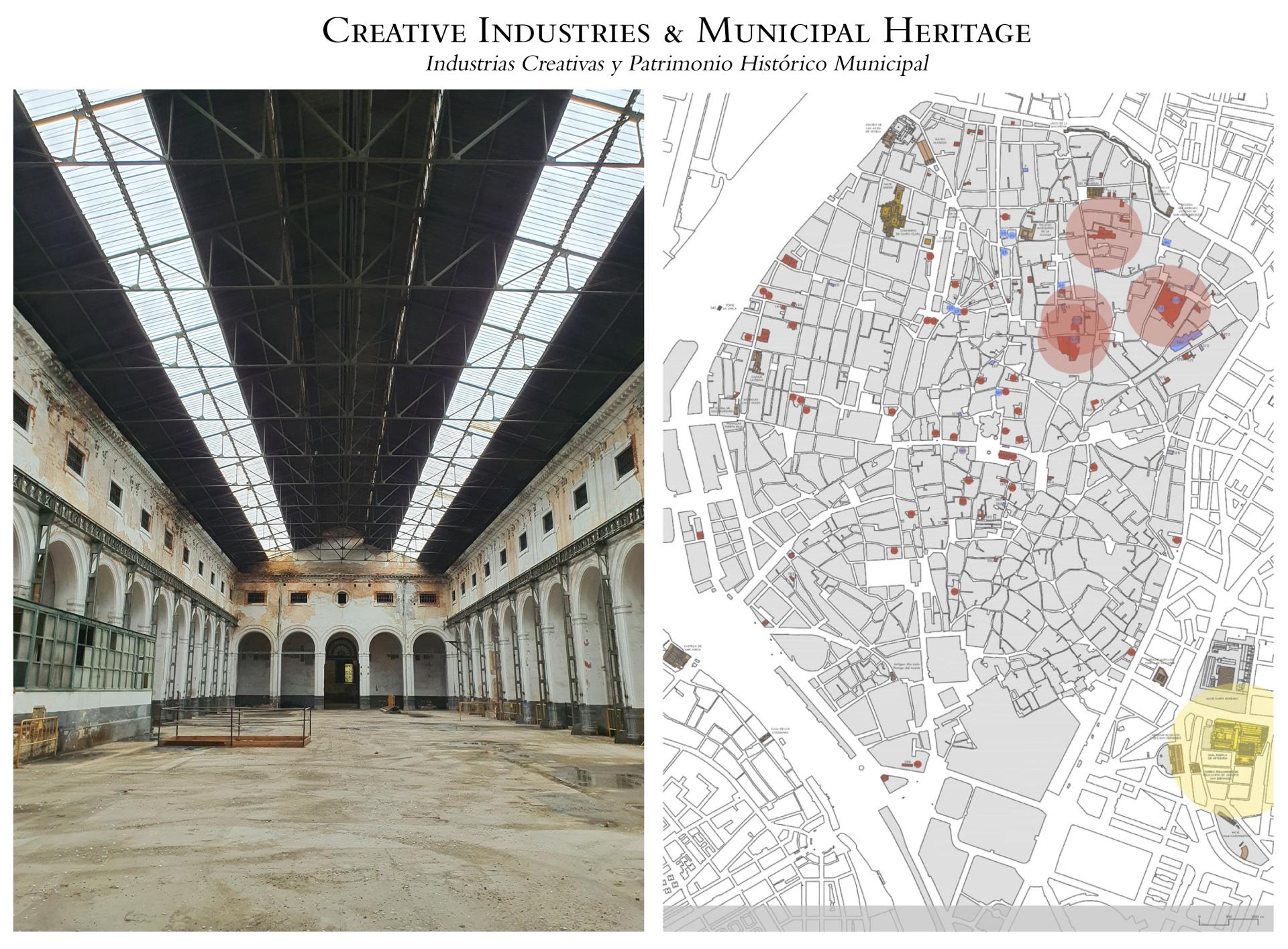Next Generation Municipal Heritage
Basic information
Project Title
Full project title
Category
Project Description
Seville Municipal Heritage Master Plan is a pioneering integrated management model tool designed for the first time for the preservation, transformation and reuse of a city's municipal heritage buildings, identifying and giving them a leading role in the green, digital and creative transition as a resource for sustainability, aesthetics and inclusion, having been applied experimentally and successfully in the 115 municipal heritage buildings in the city of Seville.
Project Region
EU Programme or fund
Description of the project
Summary
Seville Municipal Heritage Master Plan is a pioneering model comprehensive management tool designed for the first time for the preservation, transformation and reuse of a city's municipal heritage buildings. The model strategy has been developed initially for the 115 municipal architectural heritage assets of the city of Seville.
In Seville, as in many other European cities, the municipal buildings are the most significant set of heritage assets that illustrate the history of the city and its citizens, being very relevant for the contemporary city due to their richness and typological and chronological variety, often encompassing buildings from all historical periods: archaeological areas, walls, monasteries, palaces, theaters, garden pavilions, industrial buildings, modern heritage.
Pursuing values of sustainability, aesthetics and inclusion, the Plan proposes these properties as a system in the contemporary city, making it a catalyst for innovative urban policies, progress, innovation and sustainable development, while also being an element that generates employment, improves the quality of life of citizens, and economic and social development, as well as maintaining historical memory and enhancing cultural identity, far beyond, therefore, being simply a tourist object. On the other hand, their dispersion throughout the city and their central position in the territory increase their possibilities as protagonists and driving forces in the new green, digital and creative transition.
The model Plan for the municipal heritage of a city that is presented to the New Bauhaus Awards, based on its implementation in Seville, aims to contribute to an urban renewal that can use municipal heritage as a catalyst to create more sustainable, aesthetic and inclusive places in European cities.
Key objectives for sustainability
As a symbol of the history of the city and the essence of citizenship, municipal heritage builds a link between the history, present and future of cities, an approach that inextricably links heritage and sustainability. On the one hand, municipal heritage is a resource recognised by citizens as a set of common assets owned by them, listed for legal protection and heritage planning. On the other hand, sustainability is the ability to create a safe, stable, prosperous and ecologically minded society.
The commitment that municipal heritage resources can help both the sustainability of cities and that buildings can be better preserved and continue to evolve over time, linking past, present and future is a very innovative approach. The inclusion of heritage resources in sustainable development policies is an indicator of how the past is being recognised in current development strategies and how they will impact on the future.
The Plan is firmly committed to linking heritage and sustainability for the transformation of cities, which implies thinking about a model of urbanisation that recognises the three temporal dimensions - past, present and future - integrating the conservation of the city's resources - natural, cultural and human - into the broader objectives of urban development.
In addition to the integrated heritage approach to sustainability, the Plan also introduces economic and environmental sustainability. To this end, actions have been designed to minimise the economic cost and maximise the income derived from their management, in the first case, as well as a determined policy so that these buildings, in the second case, contribute to increasing the environmental quality of the city through decarbonisation and an appropriate energy management policy.
Key objectives for aesthetics and quality
The municipal heritage assets of a European city usually include the most representative buildings of the city's history, examples of beauty and quality of life and civic experience. In European culture, the City Council has been the most important, recognisable and closest institution to the citizens, who exists because they are collectively constituted as a municipality. The municipality represents what its citizens were and what they want to be. The buildings that have been built or acquired throughout history by the citizens through the City Council are usually the richest heritage of European cities and the ones that best illustrate their history, the progress of their citizens, the evolution of their culture and their own identity. Municipal buildings are usually significant buildings or assets of the architectural culture of each historical period, which makes them relevant architectural works in the historical urban landscape, protagonists of the aesthetic qualities of the city with which citizens feel recognized and proud to belong to the community.
Through different actions, the Plan decisively increases the role of municipal buildings in the city as identity and aesthetic elements of the contemporary city, strengthening the relationship between citizens and buildings beyond their functionality. The uses defined by the Plan for each of these buildings do not have functionality among their priorities, in favour of the interrelation between the historical and aesthetic value of the building given by the citizens and its possibilities to be the protagonist of the new green, digital and creative transition. In order to enhance the aesthetic experience linked to the use of the buildings by citizens, the Plan promotes the mix of creative, cultural and educational uses in the buildings.
Key objectives for inclusion
It is predicted that cities will increasingly be the place where the world's population lives. The municipal heritage assets of a European city usually include the buildings that are most representative of its history, those with which the greatest number of citizens identify. Municipal buildings symbolise all citizens, they represent the unity of the local community, and are therefore an important tool for the social inclusion of all citizens united in their past, present and future.
It is a very innovative approach to ensure that municipal heritage resources can actively contribute to inclusion, as they are a social, economic and cultural resource that benefits everyone.
Inclusion structures the Plan, as its objectives include benefiting the entire local community as well as encouraging the inclusive participation of all citizens in its achievement. This heritage approach for the inclusion includes accessibility and affordability, for which actions have been designed for the complete socialization and physical-motor, sensory and cognitive accessibility of these heritage buildings in order to guarantee the inclusion of all citizens.
With the broadening of the focus in recent decades, heritage no longer means only very old buildings in the heart of city centres, but has been extended to 20th century suburban buildings, industries, rural buildings on the margins of the city and landscapes. These assets are the characteristic historic elements of neighbourhoods located in peripheral locations, further away from the centres, which are charged with local identity for the citizens of these places. The Plan establishes for these buildings their role as catalysts for the necessary urban and social requalification of the peripheral neighbourhoods, designing their full inclusion in a system that connects the whole contemporary city from the heritage, thus enhancing the necessary inclusion of all citizens in a great shared project of a city in which no one is left out.
Results in relation to category
The Master Plan has been designed by a large and interdisciplinary group of researchers from the University of Seville. The interdisciplinary nature of the architectural heritage has required the involvement of professors and researchers from ten different university departments, as well as synergy with numerous technicians from Seville City Council. The cooperation between the University and the City Council during the drafting of the Master Plan aims to consolidate the preservation and transformation of Municipal Heritage as a catalyst for research, transfer and applied innovation for a more sustainable, aesthetic and inclusive city based on municipal heritage, which is recognized as a mobilizing element for citizens.
The main result of the Plan is the design of a unitary and operative strategy that guarantees the active participation of a city's municipal heritage, designed above all for the European city, in the new green, digital and creative transition, being one of the main tools to materialise it due to its capacity to mobilise citizens and its diffuse presence throughout the city and the territory.
The designed structure guarantees both the preservation of heritage and its transformation for an inclusion in the dynamics and challenges of contemporary society. This is reflected in 9 Management Programmes (Institutional Organisation; Information, Documentation and Digitisation; Conservation, Restoration and Maintenance; Research; Socialisation; Utility and Functionality; Archaeological Research; Funding and Economic Viability; Heritage Framework) which encompass 30 specific actions with digitisation and sustainability as cross-cutting policies.
How Citizens benefit
The City Council represents the very essence of citizenship and is the ultimate guarantor of citizens' rights. The pioneering design of a Plan for a city's municipally-owned heritage is committed to ensuring that identification with the shared values symbolised by a city's municipal heritage serves as an activator for its citizens to participate and commit themselves both to its governance and to a human-centred urban transformation.
The activation of citizens, their participation and involvement in local governance are major challenges facing contemporary society and European cities. The main objective of the Plan is that the enhancement of municipal heritage brings with it the activation of citizens in contemporary society. Socialization is a transversal policy of the Plan that is operationally materialized through specific actions of one of the 9 management programmes. Its objective is the involvement of civil society in the new digital, green and creative transition of cities through the identification of citizens with their municipal heritage, being, in turn, the involvement of citizens necessary to carry out the development of the Plan itself.
The identification of citizens with the municipal heritage means that it can become one of the most effective tools for facing global challenges from the local dimension, contributing to overcoming them through its capacity to mobilise and inspire citizens, together with its diffuse and capillary presence in the city and the territory. As a repository, ultimately, of the history of the city and its citizens, municipal heritage builds a union between the past, present and future of cities, with an ever greater involvement of civil society as one of its main objectives and expected results.
Innovative character
The Master Plan is UNESCO's recommended management tool for heritage buildings worldwide. Generally designed for individual and singular buildings, it has never before been designed for a group of municipal buildings in a city, nor for such a large and significant group of buildings and with so much potential for the contemporary city.
It is the first time that a heritage buildings Plan has been designed that is not only an instrument for preservation but a tool that, by guaranteeing conservation, allows municipal heritage to participate in facing the main challenges of contemporary society. The main innovation of the team of researchers and municipal technicians who have developed the Plan lies in the design of a strategy for municipal heritage to go from being a vestige of the past to being one of the main tools for building the future.
Its pioneering design is the main result of applied research developed between the University of Seville and Seville City Council; the innovation of the proposal and the interdisciplinary nature of the architectural heritage has required the involvement of professors and researchers from ten different university departments of the University of Seville, as well as the synergy with numerous technicians and City Council bodies. Designed in a very innovative way by the University of Seville in cooperation with the City Council, the Plan pursues values of sustainability, aesthetics and inclusion for these assets as a system in the contemporary city. The innovation is based on considering this system of municipal assets as a catalyst for innovative urban policies, progress, innovation and sustainable development, while also being an element that generates employment, improves the quality of life of citizens, and economic and social development, maintains historical memory and enhances cultural identity, far beyond, therefore, being simply a tourist attraction.






